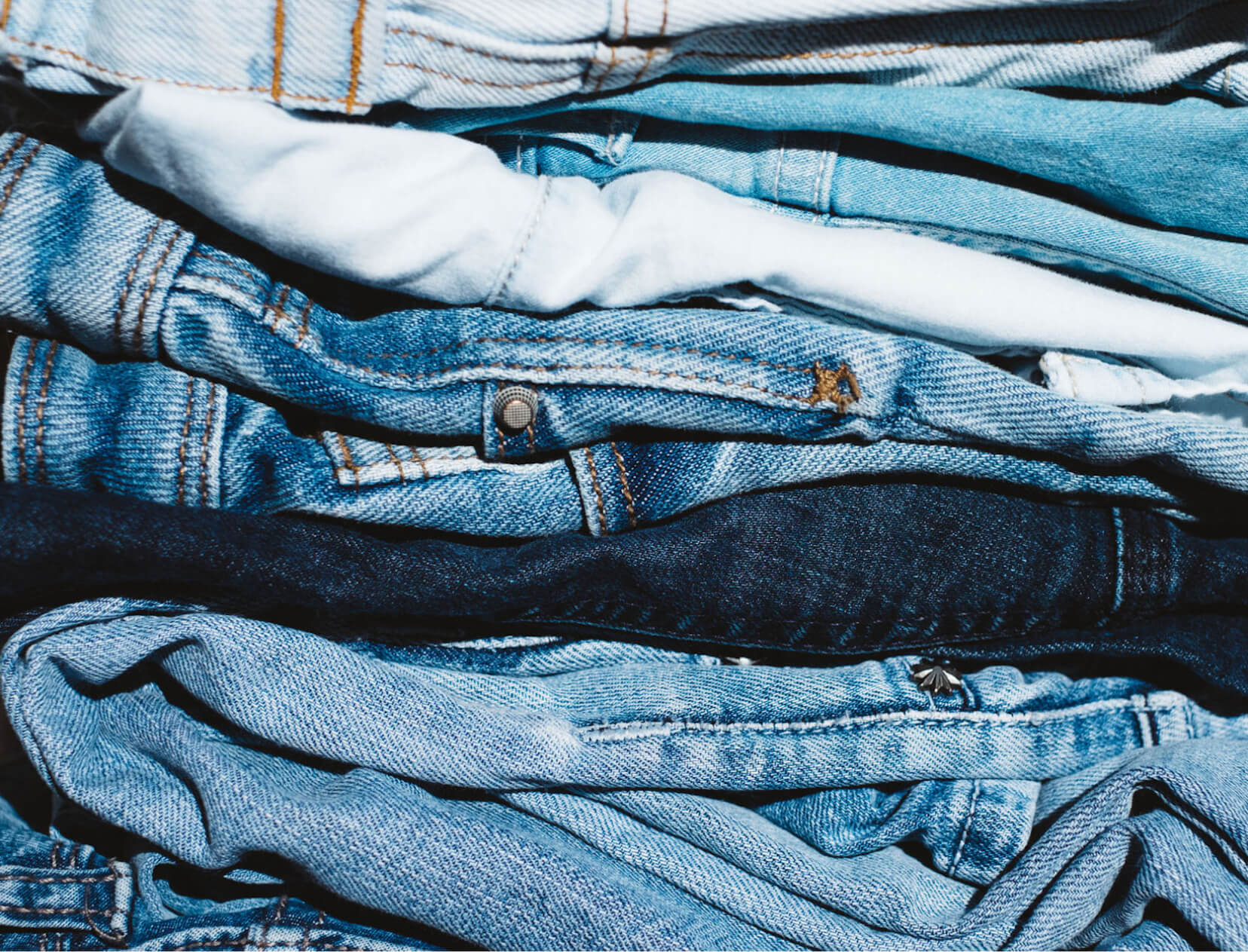How Do We Fix the Problem of Fast Fashion? | Goop


Tracing the origins of a piece of clothing is often a baffling and fruitless process for conscious
consumers. And yet we know how important that curiosity is: The fashion industry produces more than 8 percent of
total greenhouse gas emissions worldwide. Greenwashing—the practice of falsely marketing products as
sustainable—is
rampant in the industry. Fast fashion manufacturing is closely linked to labor rights violations, women’s
subjugation, and child labor.
From Unraveled
I got into fashion as an outsider, and still see myself as one. My path into the world of clothing began not in
fashion school, but in law school and through work at the United Nations.
One summer, I was dispatched to Arusha, Tanzania, working at the International Criminal Tribunal for Rwanda. I
spent my weekends doing my fair share of wandering, and in Arusha on a weekend any wandering will lead you to a
market. These gatherings of makers, growers, and entrepreneurs were vibrant, joyful, and irresistible to my twenty-
something self. At first, I used these shopping trips to find souvenirs to bring back home.
The more time I spent there, though, the more I realized I was getting more than just gifts thought my relatives
and friends would find pretty. I started to form relationships with the people who were making some of the things
that I was buying—the woman who’d made my cool, yet classic floral shorts, the man who wove the baskets I hung on my
walls. Visiting those markets, where the fabrics, colors, and patterns were rich with cultural significance, I also
came to value the beauty of handcrafted work. Beyond the odd trip to the farmers’ market, I really had never had
meaningful interactions with the people and places behind what I consumed.
The conversations and discoveries I had at that market would return to me in the months and years after. I started
to connect the dots between the Sustainable Development Goals the UN folks were so focused on and the things we
purchased. That is to say, environmental degradation and poverty, for example, were both tied to how our things are
made and paid for and how we use them. How global trade relationships are structured are a major determinant of
whether people have the opportunity to make things and earn a living to begin with. At the same time, the
craftspeople I met showed exceptional creative talent and an entrepreneurial drive—they had what it took to make
livelihoods that were sustainable for their families, communities, and the planet. What if I could make a business
out of working with people like that—artisans whose talents customers would be pleased to know about and support
with their purchase power? Eventually, that impulse led me to cofound Zady—which then led me to the Javits Center,
confronted with the realities of the fashion industry.
As Zady evolved, I kept digging deeper. If I was really most interested in advancing “sustainability,” was the best
vehicle to do that a company whose business model, when it came down to it, was to sell more things? And since
citizens and the industry itself had proven to not know its own impact, could I play a more helpful role by bringing
that information to light? Eventually, decided to stop selling clothing and focus all my attention instead on
explaining the fashion industry’s real impact. I connected with experts who understood every aspect of fashion’s
impact on our world—agronomists, climate scientists, historians, fashion executives, factory executives, and
material scientists; labor experts, organizers, and laborers; political scientists, toxicologists, psychologists,
marketers, and economists—to launch a research and action think tank—a step above your average think tank, where
ideation stops at the whiteboard. The New Standard Institute (NSI) is an effort to use information, data, and
stories not for private profit, but for the public good.
My goal at New Standard Institute is to provide rigorous research and data (and highlight when more is needed)
about the fashion industry, which is not, unsurprisingly, known for transparency. As we will cover in the pages
ahead, the processes and practices behind how our clothes get made have flown under the radar. As a result, the
information that has been captured thus far has been piecemeal and often inaccurate. Data is one way to tell a
story, and a pretty convincing one at that, but most of what we all do has little to do with data. (If we all acted
on data alone, we’d be in a very different world right now.) The stories that get us to act are ones that spark
something in our spirits, that put up a mirror to our own experience that reminds us of others who have the same
values, fears, triumphs, and dreams as ours. What you are about to read is that kind of story.
•••
When I set out to write Unraveled, I wanted to trace the life and death of a single pair of jeans—a garment that
ubiquitous in our culture, beloved for function and style alike—from farm to landfill. This is an extension of the
journey I began at Zady, trying to tell the basic origin story of a garment. But there were obstacles, as I had
already discovered with Zady. Companies do not have a clear understanding of their own supply chains, and many
manufacturers are not exactly willing to throw their doors open for scrutiny. These roadblocks show just how far the
industry has to go before it achieves anything close to true transparency. So while this story does not follow one
single pair of jeans in a literal way, it does follow where an average pair might go, alongside many other kinds of
garments (everything goes with jeans, right?).
In the story that follows we will visit cotton farms in Texas, which was and still is a significant source of
global cotton production, meeting farmers navigating the trade-offs between the health of their land, their bank
accounts, and themselves. In China we will see how those raw fibers are spun into yarn, dyed, and woven into denim.
And in Sri Lanka and Bangladesh we will meet the women responsible for cutting and sewing fabric into a final
garment. Back in America, we will go inside an Amazon warehouse to see how our jeans are shipped and make their way
to our closets. Finally we travel to Ghana, where quite a bit of our clothing lands after we’ve had our way with it,
becoming our jeans’ final resting place.
The story of a pair of jeans is the story of modern fashion and capitalism, another reason why they make a
particularly fitting hero for our journey. Today, 1.25 billion (yes, that’s billion with a “b”) pairs of jeans are
sold globally every year, and the average American woman has seven
pairs in her closet. They are evidently a big player in the fashion world, which is itself a major player in the
global economy. The jeans we wear today have become an ironic symbol of democracy that even American presidents have
played into (until the suit-donning forty-fifth, that is). They are billed as all-American, but the truth of their
creation takes us far outside the US borders, and deeper inside where we’d ever think to look. The story of our pair
of jeans will take us around the world and back, reflecting the sprawl of our supply chains and the degree of
cultural fusion that has allowed fashion to become the radically opaque and exploitative force it is today.
I could give you all this in numbers and charts, and there will be a few of those in the pages ahead, but more
important this book introduces you to the people who are involved in making your clothes. What their stories reveal
is that understanding the systems of creation and distribution of clothing, of how they are marketed and the impact
that marketing has on us, helps us understand our broader world and our role in it.
Until very recently, this $2.5 trillion industry has been relegated to the “style” section, connoting that it’s
superficial, girly, fun, unimportant. Yet it’s an enormous industry. It is responsible for the incredible net worth
of a few people at the very top of the list of the wealthiest people on the planet. It employs millions of the most
vulnerable people globally—a majority of them women—and engages some of the lowest-paid labor domestically, as well.
And it has a significantly destructive impact on our environment, contributing, according to one report, at least
the same level of greenhouse gases as France, Germany, and the United Kingdom combined. The roots of how we dress
are also the roots of slavery and colonialism—systems of oppression that we will see are far from fully dismantled,
and behind the conflicts over racial equality that are raging today. Our deeply unequal economic system is also the
fruit of those systems. Seen together, the story of our clothes also helps us understand why our societies have
become so divided. In the words of historian Sven Beckert, “Too often we prefer to erase the realities of slavery,
expropriation, and colonialism from the history of capitalism, craving a nobler, cleaner capitalism. We tend to
recall industrial capitalism as male-dominated, whereas women’s labor largely created the empire of cotton.” Part of
my intention in writing this book is to put fashion and the clothing industry in its rightful place as not just part
of, but at the foundation of, industry and society as we know it.
I have come to believe that the reason this industry has not been taken seriously in the world of policy and
business is because it has been relegated to the domain of social “minorities”—namely, women and people of color
(and often both). Since the earliest days of industrialization, clothing has largely been made by people belonging
to both these two groups, and marketed mostly to women; we’ll meet some of their progeny—the people whose hands make
our garments today—in the pages that follow. Even in environmental circles, fashion is very often dismissed. I can’t
tell you the number of times I have spoken with significant environmental donors about the impact of the fashion
industry during my work for NSI, to which they would respond, Oh, you should talk to my wife about that, she loves
fashion. (That would of course be meaningful if the wives of major environmental donors held the purse strings, but
from my experience, they do not.)
The lack of attention has allowed the industry to operate with very little regulation and not as significant
coverage in the media, all the while its (mostly male) executives make enormous sums of money on the backs of
(mostly) women’s work and women’s purchasing. I write this book as someone who both is deeply troubled by the
industry and the society that has been created in the effort to sell us more of it and appreciates the power and
pleasure of clothing. The knowledge of how our clothing is made, marketed, sold, worn, and discarded is a powerful
lens through which to better see the truths of our world and its history, however beautiful or ugly they may be.
Seeing clearly is the first step to dismantling the urgent injustices this book describes and bringing about not
only a more just society, but a pleasurable and thriving one.
From Unraveled: The Life and Death of a Garment by Maxine Bedat, published on June 1 by Portfolio, an imprint of the Penguin Publishing Group, a division of Penguin Random House, LLC. Copyright © 2021 by Maxine Bedat.
Maxine Bédat is the founder and director of the New Standard Institute, a think tank tackling sustainability
and labor issues in the fashion industry. She was previously the founder and CEO of the sustainable fashion
initiative Zady. Her first book is Unraveled: The Life and Death of a Garment.
We hope you enjoy the book recommended here. Our goal is to suggest only things we love and think you
might, as well. We also like transparency, so, full disclosure: We may collect a share of sales or other
compensation if you purchase through the external links on this page.
This article was originally published by goop.com. Read the original article here.



